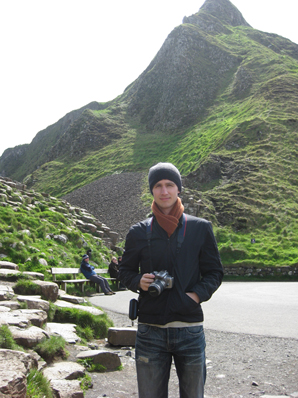Reggie Drachenberg
The Challenge of ‘Big Science’

Fiber laser researcher Reggie Drachenberg earned his bachelor’s degree in electrical engineering from the University of Central Florida and his master’s and doctorate in optics from Central Florida’s highly regarded College of Optics and Photonics. When he first considered postdoctoral research at LLNL, he was a little intimidated.
“I assumed it’d be hard to come here and work on all this physics-oriented stuff with my electrical engineering background,” he says. “I wasn’t sure I could make the transition to ‘big science.’”
But Reggie soon saw how physicists and engineers worked together effectively in the NIF and Photon Science Directorate, and he realized that his optics- and engineering-oriented perspective was an asset, not a disadvantage. One of the things he appreciates most about working at LLNL is the collegial atmosphere. “Here, there is a lot of sharing of equipment and ideas, and I really like that,” Reggie says.
Reggie works with the Fiber Laser Group to design and fabricate specialty optical fibers as well as the lasers that make use of those fibers. As part of a Laboratory Directed Research and Development Strategic Initiative, the group has been addressing how to scale fiber laser power. Scientists are approaching a fundamental power limit for fibers with conventional circular geometry. The Fiber Laser Group is investigating whether alternative fiber shapes will allow them to scale up energy without optical damage.
Reggie and his fellow fiber laser researchers are developing the proof of concept for a 10-kilowatt fiber laser using a rectangular fiber geometry. Reggie is working to illuminate modes in these rectangular fibers that have not been studied before and test them for various parameters, such as purity. A mode is a path for the light. Standard commercial fibers with a small core of fiber can only support a single mode, while larger cores, such as those used for ribbon fibers, can support more modes.
When not in the laser laboratory, Reggie often assists in operating LLNL’s optical fiber draw tower. The tower produces optical fibers on demand for a wide variety of research projects. Drawing specialty fibers is a team process. Reggie says it takes three days and two people to draw a fiber, which results in a fiber several kilometers long. Each fiber they make is a chance to tweak various parameters, which Reggie can then test in the laboratory.
Reggie considers himself a science nerd with typical interests: reading comic books and playing video games. He also balances his life with hiking, playing basketball and attending the ballet.



